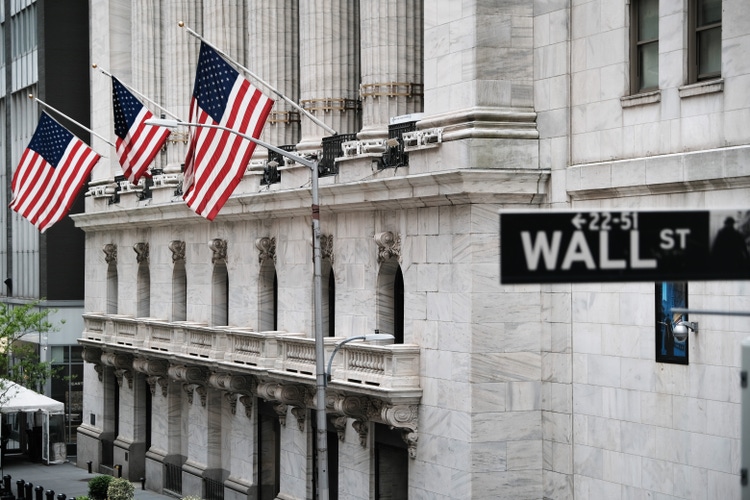Spencer Platt/Getty Images News
Stocks ended Wednesday’s session with notable gains, surviving a midday swoon following the Federal Reserve’s first interest rate hike since 2018. Further bargain hunting, especially among technology shares, allowed the major averages to build on a rebound that started during the previous session.
Stocks got an initial boost on mounting hope that the Russia-Ukraine conflict could reach a negotiated end in the near future. However, signs that the Fed would aggressively raise interest rates, as part of a stepped-up campaign to control inflation, prompted selling in early afternoon action.
The slide proved short-lived, however, as the major averages recaptured their previous gains headed into the close. The Nasdaq (COMP.IND) +3.8%, S&P (SP500) +2.2% and Dow (DJI) +1.6%.
Looking at the day’s closing numbers, the S&P 500 advanced 95.41 points to finish at 4,357.86. The Dow climbed 518.76 points to end at 34,063.10. The Nasdaq concluded trading at 13,436.55, a rally of 487.93 on the session.
Eight of the 11 S&P sectors finished higher. Information Technology led the advance, with a rally of 3.3%. Energy, Consumer Staples and Utilities posted fractional declines.
The 10-year Treasury yield moderated gains posted in the immediate aftermath of the Fed announcement. Still, the figure rose two basis points to reach 2.18%. The 2-year yield rose 7 basis points to about 1.93%.
During the session, the Fed raised rates by a quarter of a percentage point and issued a hawkish projection for ongoing rate hikes, with a majority of top central bank officials predicting at least another six rate hikes during the rest of 2022. The median rate at the end of 2022 rose to 1.9% in the latest set of projections, compared with 0.9% in December. For 2023, the median rate prediction came in at 2.8%, up from 1.6% in December.
The quarter-point hike was expected, but the big shift in the Fed’s dot plot sent yields shooting up, especially on the short end of the yield curve.
“I would put the Fed at a level of panic,” Guggenheim’s Scott Minerd said on Bloomberg. “That is, every piece of news that comes out we have this sort of rethink, the erratic nature of the dot plot.”
He added: “I think they are in inflation panic and they’ve gone from transparency to ‘we have to be much, much more aggressive.'”
Turning to the Russia-Ukraine conflict, stocks got a boost when the Financial Times reported that both sides are making progress on a 15-point plan that would see Russia withdraw and Ukraine accept neutrality and limits on its armed forces. But another report said Kyiv would not accept the neutrality demands.
Ukraine President Volodymyr Zelenskyy earlier appealed for more sanctions and a no-fly zone in a video address to Congress today.
On the data front, February retail sales rose a little less than expected.
“The headlines look disappointing but the upward revisions – headline and non-auto sales were revised up by 1.0%, with the control measure up +1.5% – were bigger than the shortfalls against the February consensus forecasts,” Ian Shepherdson at Pantheon Macro said.
“Stepping back from the noise, the first quarter is now on course for a near-12% annualized increase in the control measure – assuming no revisions to the February numbers and unchanged m/m sales in March – a bigger increase than we previously expected,” he added. “In Q3 and Q4 last year, control sales rose by 2.8% and 6.2%, respectively, so this is a clear acceleration. It probably cannot be sustained, but in the meantime you should expect to see upward revisions to forecasts for Q1 GDP growth.”
Among active stocks, China-related issues are rallying after a central bank pledge to keep capital markets stable.
